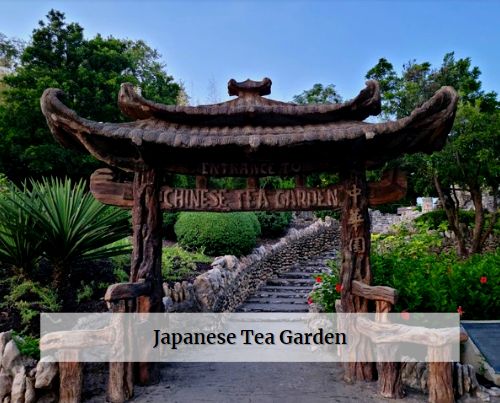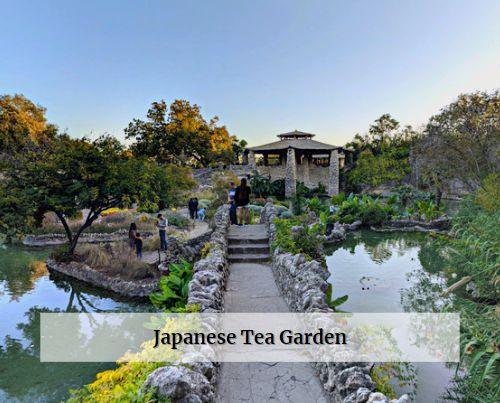The Japanese Tea Garden is a popular attraction located in San Antonio, Texas. It is a unique cultural destination that attracts visitors from around the world. The garden has a rich history and is known for its beautiful landscaping, unique structures, and serene atmosphere. In this article, we will explore the history and features of the Japanese Tea Garden in San Antonio.
History of the Japanese Tea Garden
The Japanese Tea Garden was originally created in the early 20th century as a rock quarry. In 1915, the city of San Antonio hired architect J. R. Harris to transform the quarry into a public park. Harris worked with a Japanese-American artist named Kimi Eizo Jingu to design a beautiful garden that would reflect Japanese culture.
The garden was officially opened to the public in 1919 and quickly became a popular destination for locals and tourists alike. In 1926, the garden was renamed the Japanese Tea Garden, and a tea house was added. The tea house served as a gathering place for visitors to enjoy traditional Japanese tea ceremonies and other cultural events.
During World War II, the garden was renamed the Chinese Tea Garden, and the tea house was closed. The name change was a response to anti-Japanese sentiment during the war. However, after the war ended, the garden was restored to its original name, and the tea house was reopened.
Features of the Japanese Tea Garden
The Japanese Tea Garden features a variety of beautiful and unique structures and landscapes. Some of the notable features include:
- The Entrance Gate: The entrance gate to the Japanese Tea Garden is a beautiful wooden structure that features intricate carvings and traditional Japanese design elements.
- Koi Pond: The garden features a large Koi pond that is home to dozens of colorful fish. Visitors can feed the fish and enjoy watching them swim in the tranquil waters.
- Waterfall: A picturesque waterfall is located in the center of the garden. It cascades down a series of rocks and creates a serene atmosphere. This Hyperlink
- Stone Bridges: The garden features several stone bridges that span the Koi pond and connect different areas of the garden.
- Tea House: The Japanese Tea Garden’s tea house is a beautiful structure that features traditional Japanese design elements. Visitors can enjoy traditional Japanese tea ceremonies and other cultural events at the tea house.
- Landscaping: The garden’s landscaping is carefully designed to reflect traditional Japanese design principles. The garden features manicured lawns, carefully placed rocks and stones, and a variety of trees and shrubs.
Activities at the Japanese Tea Garden
The Japanese Tea Garden offers a variety of activities for visitors to enjoy. Some of the activities and events that take place at the garden include:
- Traditional Japanese Tea Ceremonies: The tea house at the garden hosts traditional Japanese tea ceremonies on a regular basis. Visitors can enjoy a cup of tea and learn about Japanese culture and tradition.
- Weddings and Events: The Japanese Tea Garden is a popular destination for weddings and other special events. The garden’s beautiful landscaping and unique structures provide a picturesque backdrop for any occasion.
- Guided Tours: The garden offers guided tours that provide visitors with a detailed look at the history and features of the garden.
- Photography: The Japanese Tea Garden is a popular destination for photographers who want to capture the garden’s beauty and unique design elements.
In conclusion, the Japanese Tea Garden in San Antonio, Texas, is a beautiful and unique destination that reflects traditional Japanese culture and design. Visitors can enjoy a variety of activities and events, including traditional tea ceremonies, weddings, other special events, guided tours, and photography. The garden’s rich history and beautiful landscaping make it a must-see destination for anyone visiting San Antonio. See More Hints
How to Go There?
The Japanese Tea Garden is located at 3853 N St Mary’s St, San Antonio, TX 78212, United States. There are several ways to get to the garden, including:
- Car: Visitors can easily access the garden by car. The garden is located off Highway 281 and is easily accessible from all major highways in San Antonio. There is ample parking available on-site.
- Public Transportation: The Japanese Tea Garden is also accessible by public transportation. Visitors can take the VIA Metropolitan Transit bus system to reach the garden. Bus routes 14, 16, and 21 all stop near the garden. Visitors can check the VIA website for schedules and fares.
- Ride-Sharing: Visitors can also use ride-sharing services like Uber or Lyft to get to the garden. Simply input the garden’s address into the app to be dropped off at the entrance.
Once visitors arrive at the garden, they can explore the beautiful landscapes and structures at their leisure. Guided tours are available for those who want a more in-depth look at the garden’s history and features. Visitors should wear comfortable shoes and dress for the weather, as much of the garden is outdoors.
Additionally, visitors should be aware that the garden is closed on Mondays and may have limited hours on holidays. It’s always a good idea to check the garden’s website or call ahead to confirm hours of operation before visiting.
Important Information You Need to Know
- Address: 3853 N St Mary’s St, San Antonio, TX 78212, United States
- Website: http://www.saparksfoundation.org/
- Contact: N/A
- Open Hours: Open daily (7 am-5 pm)



